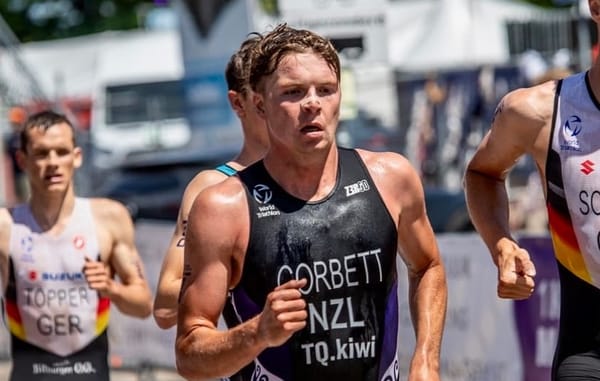The oldest official International IRONMAN event, IRONMAN New Zealand, celebrates its 30th birthday
The oldest official International IRONMAN event, IRONMAN New Zealand, celebrates its 30th birthday on March 1. The fourth in the series looks back on the last 15 years when the race moved to the tourist destination of Taupo. Taupo proved a logical new venue for IRONMAN New Zealand. It is a tourist d

The oldest official International IRONMAN event, IRONMAN New Zealand, celebrates its 30th birthday on March 1. The fourth in the series looks back on the last 15 years when the race moved to the tourist destination of Taupo.
Taupo proved a logical new venue for IRONMAN New Zealand. It is a tourist destination, close to the major international airport of Auckland, based around a crystal clear lake, it offered a more user-friendly course which was much safer and abundant local support.
While the first year was accompanied with persistent rain, it saw numbers swell by a quarter and, by the 20th anniversary in 2004, it pushed over the 1,000 mark. This year’s 30th anniversary had final entries of 1,760.
The dominance of internationals continued for the first two years in Taupo, won by American Tim DeBoom, the legendary German Thomas Hellriegel, and Canadians Melissa Spooner and Lisa Bentley.
Until the new Millennium—aside from the four wins from the great Erin Baker—there had been only four Kiwi winners, while 22 internationals triumphed. The superstars of the sport regularly ventured to this country in their off-season to take away the spoils.
The move to Taupo coincided with the rise of two young New Zealanders who would change the perceptions that Kiwi success was a one-off thing. Cameron Brown and Joanna Lawn would be crowned the King and Queen of Taupo, winning 17 times between them.
Brown finished second to DeBoom by the length of the finish chute in 1999 and improved six minutes in 2000 to be second to Hellriegel. The breakthrough came in 2001 when he ran down a 12-minute deficit to then ITU World Long Distance champion Peter Sandvang, where the Kiwi’s 2:45 marathon set tongues wagging. Brown went on to finish second to DeBoom in Hawaii that year, the first of four podiums in five years at Kona.
He ground out a solid three minute win over Jonas Colting (SWE) in Taupo in 2002 before blitzing the field by eight minutes to break Hellriegel’s race record in 8:22:05 the next year. He lowered his race record to 8:20:15 in 2005 and out-duelled Aussie Luke Bell in a classic battle in 2007.
The magical 10th victory—he became the first person to win the same Ironman race 10 times—came on a wet day in Taupo in 2011 as the (then) 38-year-old dominated to win by 10 minutes. In 2013 Brown’s mantle over the full IRONMAN distance (the race was shortened in 2006 and 2012 due to weather) was finally lowered, fittingly by another Kiwi, in the form of Taupo’s own double-Olympic medalist, Bevan Docherty.
Lawn, a nationally ranked junior tennis player and international cyclist, finished fourth in her IRONMAN New Zealand debut in 2001. A year later she improved her run to 3:12, but could not match the wonderful 3:03 marathon by fellow Kiwi Karyn Ballance.
The breakthrough came in 2003 in the best women’s finish when her 52:49 swim, and stunning 5:08 bike, was enough to hold off the flying runs from Ballance and Bentley—just four minutes covered the top three. Lawn’s time had come and her continued improvement saw her dominate in 2004, 2005, the duathlon in 2006, 2007 and she set a new course record of 9:16.00 in 2008.
She lost her title to fellow New Zealander Gina Ferguson (now Crawford) in 2009, but bounced back with victory in 2010, lowering the course record to 9:14.35. Another Kiwi, former world number one ITU triathlete Samantha Warriner, would shine in the rain in 2011 when Lawn lost all chance with a lengthy stop for a puncture. During these years Lawn would gain numerous international victories along with a fifth and two fourth placings in Hawaii.
The Taupo years have seen participation continue to steadily increase, as has the number of New Zealanders, now out-numbering visitors, but to date these years have been marked by the legacy left by Brown and Lawn.





